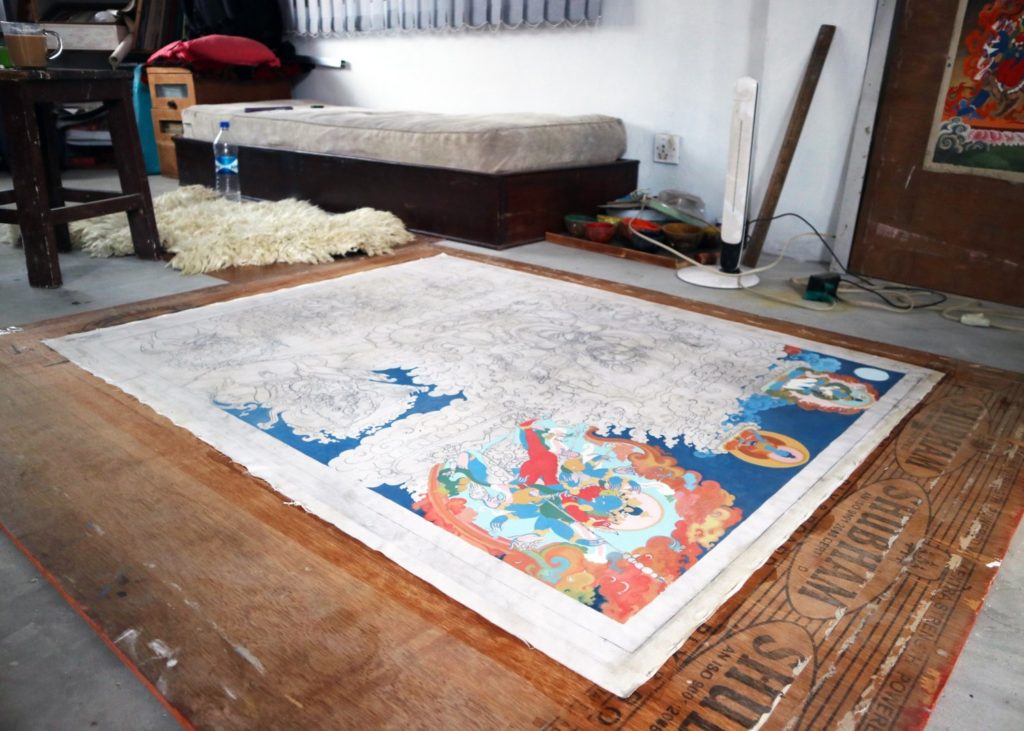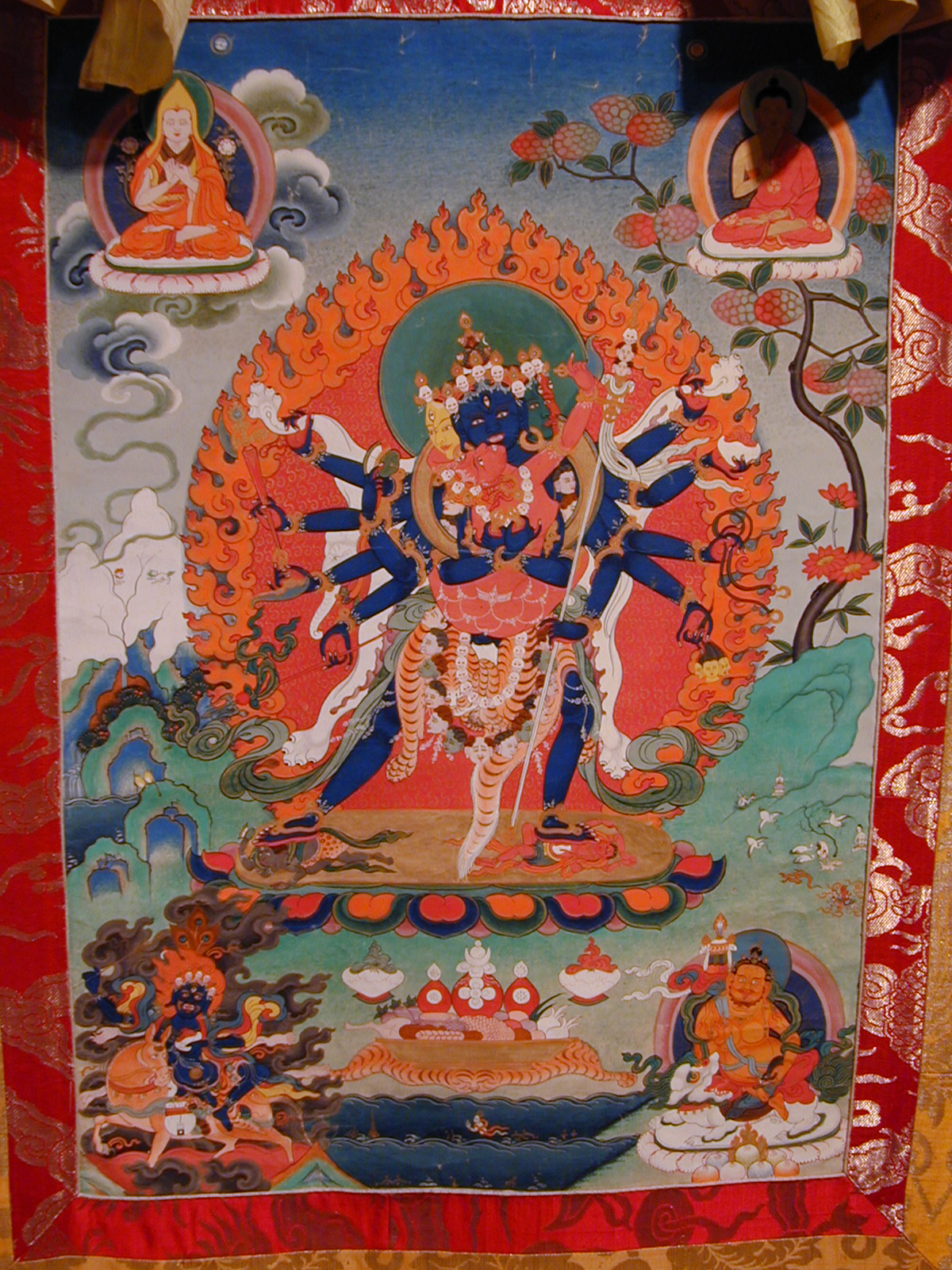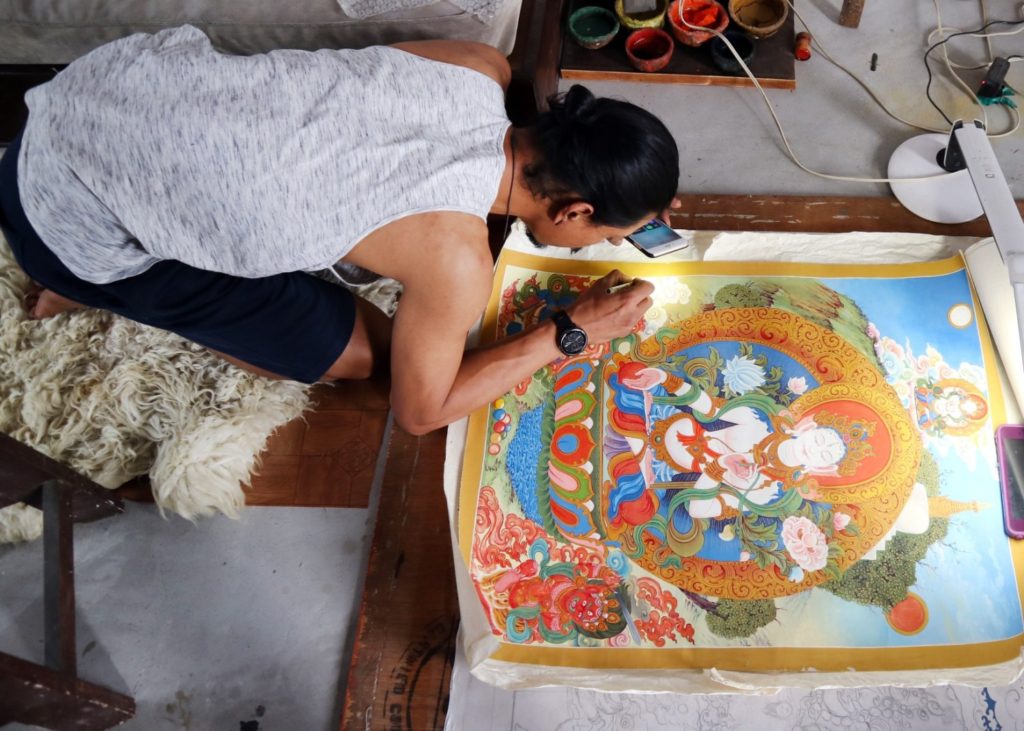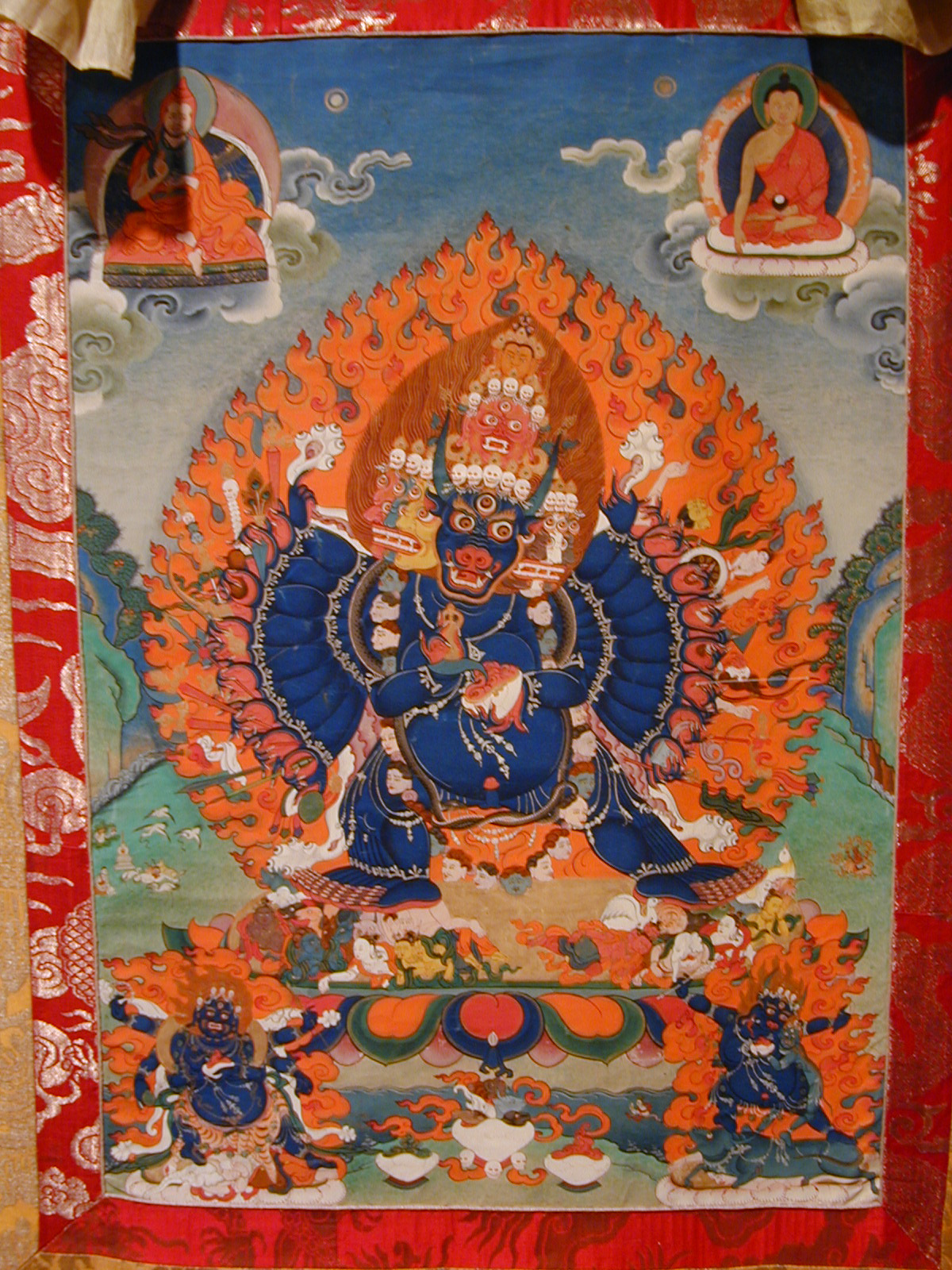Tangka: Nepali original art
Tangka -Only art and culture can introduce the long-term civilization of a society. Some of the political changes that have taken place in the world have collapsed due to lack of development of art and culture. Therefore, the importance of art and culture has increased for the lasting change and stability of the society. In this context, the Tangka art made by the Tamang caste of Nepal has been able to introduce Nepal’s nationality to the world.
Thanka is a classical art. It carries the identity of the Tamang caste. This art has been established in the world as a very ancient art. Painting on cloth, especially the biography of the Buddha and the knowledge he spread in an artistic way, is not so easy to make this art that looks unique. The importance of Tangka art is increasing in Nepali society as it is very artistic and depicts various situations of Buddha in a smooth manner.

Tangka
Some people seem to be curious about how this art is made. Artificially, it has its own method of making this art. As it is a classical art, it has a separate tradition and religious approach. The white cloth is stretched in a sewing frame. After the fabric is stretched, white clay (nowadays Texar White) and glue are applied to it and the surface of the fabric is smoothed. On that surface, the desired image is created by means of paint and brush. The picture is made according to the scriptures.
Although there is no conclusive evidence as to when the art of Tangka originated, scholars believe that it has been made since the time of the Buddha. Based on Buddhist philosophy, this art is based on religious beliefs. Nowadays, Hindu deities are also being made in the belief of Thanka-Paubha.
Tangka is derived from the Tibetan word ‘thanku’. ‘Thang’ means flat surface or part of a cloth and ‘Ku’ means idol. A painting made on a flat part is understood as a thanka. Thanka is also called Paubha in Newari language. This painting is made in Nepal especially by Tamang, Newar, Sherpa, Gurung etc. communities.
As a religious art, thangka art is taken to many countries of the world including Nepal. Thanka is kept in Buddhist monasteries and various places related to it due to the importance of Thanka art. Apart from that, some people have collected thangka art as a hobby. Due to its importance and its excellent craftsmanship, it has been collected by people of different religions.

Tangka
There is an interesting myth about the beginning of Thanka. The Buddha did not believe in idolatry, but once a disciple of the Buddha asked permission to draw a figure of the Buddha. The Buddha also gave his approval. When his disciples looked at his face to draw the image of the Buddha, the Buddha’s face became very radiant. The disciple could not draw a picture by looking at the Buddha’s face. He then painted a picture of the Buddha’s face in the shadow of water. It is said that the same picture was of the life of the Buddha.
Similarly, some scholars have suggested to the Buddha during his lifetime in front of his disciples, ‘You cannot see my form after I die, so worship by carving a picture of my form.’
According to veteran Tangka artist Mangal Lama, the Tibetans and Tamangs started practicing Tangka after the death of their relatives. After the death of a person, it was customary to keep a book, a Tangka and an idol. In the beginning, Tangka Lama was made only by priests and they were given Dakshina according to their clusters.
Later, the art spread and people from other communities also started drawing. With its commercialization, the demand for Tangka art increased not only in the Nepali market but also in the world market. At present, tens of millions of thangkas are being exported from Nepal annually.

Tangka
Since the art of Tangka was discovered only after the tenth century, it is clear that the development of thangka-pauva art in Nepal predates it. In the sixth century, the Licchavi king of Nepal, Anshubarma, married his daughter Bhrukuti to the Tibetan king, Sranchang Gappo.
He also said that he took Tangka art from Nepal to Tibet and liked it very much there. Since then, there has been talk of the development of the Tangka art in Tibet. Various scholars have commented on how the art of thangka was developed. However, it is believed that the art of Tangka originated in India and spread from Nepal to Tibet and later from Tibet to Nepal.
According to artist / art critic Madan Chitrakar, this art was first developed in India. After that, its development in Nepal was extreme.It was able to gain a foothold through Nepal to Tibet. Again this art spread from Tibet to Nepal. Due to the political and religious activities that took place at different times, this art started to be developed in Nepal to a lesser extent. It is said that after Bhrukuti’s marriage to the Tibetan king Srangchang Gampo, Bhrukuti took Tangka with various goods and later her popularity increased in Tibet.

Tangka
Before the twenties, this art was not much talked about in the world market. Gradually, this art started gaining popularity and market only after the thirties. Along with the increase in tourist arrivals in Nepal, its market has also expanded. After the twenties, many tamangs were able to make a living in this art. Economic progress began to be made in their lives. Tamang castes of Ramechhap, Kavre, Sindhupalchowk, Lalitpur, Rasuwal and other districts are leading in making Tangka commercially in Nepal.
According to a statistic, there are around 20,000 thanka making artists in Nepal at present. a veteran artist who has worked in the art of Tangka for four decades, there were around 35,000 to 40,000 Tangka artists in Nepal in 1946 BS. Even though this number has decreased nowadays, it is estimated that about 20,000 are still in this profession.
The importance and business of this art has increased because it has made a good impression on the minds of art lovers.” Millions of homes in Nepal have been lit by the Tangka business. So, if this art can be managed by the government and all the concerned bodies, millions of people can get employment. ‘He added,’ We can further strengthen Tanka as our own original identity and culture.
Tangkas are found especially in monasteries. Tangka art is found in most of the monasteries in the Himalayan region of Nepal. Dolpa, Mustang, Manang and other pre-Buddhist castes have carved this art on the walls of places including Gumba and Chryotan. In this way, the art of thangka has become the identity of the original art of Nepal.
It has been able to introduce the cultural identity of the Nepali caste to the world community. Especially, the trade of Tangka art is more in Nepal, India, Japan, Korea, USA, UK and other European countries.
Another young artist, Palsangmo Lama, says, ‘Nepali artists have succeeded in spreading our original identity to the world along with the Tangka art business. It has opened up our unique cultural side.
Influenced by the art of tangka, a large number of people come from different countries to learn this art. Dong says, ‘Hundreds of foreigners come to Nepal every year to learn the art of tangka. Along with this, they also encourage Nepali artists by buying tangka. ‘
It is important for everyone to pay attention to the development and expansion of this art created by a large community in Nepal. The more public awareness is spread about it, the more it can make a significant contribution not only to the development of original art in Nepal but also to economic development.
FAQ’S
What is the purpose of a thangka?
What is the meaning of thanka?
How do you display thangka?
How do you make a thangka painting?
Read more
Comment Here!